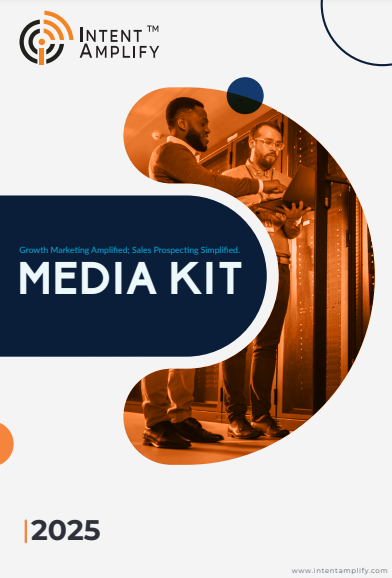
Top Sales Methodologies That Remain Relevant in 2025
- Last updated on: June 23, 2025
In 2025, B2B selling keeps rapidly changing, but the fundamental approaches that were once key to successful sales are anything but outdated. With digital-first buying habits, AI-powered decision-making, and intent data driving every interaction, top-performing sales teams aren’t rewriting the playbook. They’re evolving it.
Today’s best sales approaches aren’t about tactics alone. They’re about timing, personalization, and trust, scaled. From SaaS high-ticket sales to ABM intent-driven campaigns, here’s how some of the best-known sales strategies still drive results, and why they’re more important than ever in today’s fragmented, data-rich buying landscape.
What Is a Sales Methodology? And Why It Still Matters?
A sales method is more than a list of steps or a template for strategy. It’s an organized process that outlines how sales representatives interact with prospects, from qualification and discovery to pitch and close. Each method directs the rep’s behavior, mindset, and communication style throughout each stage of the selling cycle.
Though technology has evolved, human psychology in B2B selling remains the same. Clarity, confidence, and alignment are still required by buyers before a purchase is made. Sales processes are a behavioral operating system that directs reps to emphasize trust creation, articulation of value, and executing outreach at the right time.
In our hyper-digital shopping era, where customers do most of their homework before interacting with sales, these models are the anchors. They help ensure that reps aren’t winging it, but presenting consistent, fact-driven dialogues that advance deals in meaningful ways.
1. Solution Selling: Aligning Customer Pain with Measurable Outcomes
Solution Selling has continued to be pertinent across decades because it focuses on discovering the buyer’s unique pain areas and positioning the product or service as a custom solution. In 2025, this approach is more effective when augmented by real-time behavioral information and buying intent clues. Sales teams leveraging platforms such as IntentAmplify™ are now able to discover the issues a buyer is currently exploring prior to the initial conversation.
Instead of starting with skin-deep questions, reps now arrive in meetings with full knowledge of the account’s recent history from the articles they’ve read to the products they’re considering. This enables quicker, more efficient discussions that directly result in value articulation. By correlating these insights to business results, sales reps can create a sense of urgency without sounding too salesy. Solution Selling is only a buyer-led process when done correctly.
2. MEDDICC: Accurate Qualification in an Era of Multi-Stakeholder Buying
Developed originally to support complex enterprise sales, the MEDDICC methodology remains relevant today to B2B selling, particularly as buying committees become larger and more distributed. What has shifted in 2025 is how sellers implement it. Qualification is no longer rudimentary guesswork. Now, it’s powered by predictive scoring, intent behavior at the account level, and revenue intelligence platforms that identify gaps early.
Every step of MEDDICC, from determining the correct economic buyer to validating decision criteria, is now trackable through interaction data. If a prospect is browsing pricing or researching competitors, that can indicate their stage in the buying process. CRM-integrated dashboards call out which MEDDICC fields are complete or incomplete, providing sales leaders with improved pipeline visibility and deal assurance. For teams selling in high-velocity cycles, this degree of qualification is not negotiable.
3. Challenger Selling: Differentiation Through Provocative Insight
Challenger Selling is still among the most effective strategies for differentiation in market-saturated situations. When customers are overwhelmed with generic information, a lot of it AI-sourced, the capability to educate on something new is a genuine differentiator. In 2025, the Challenger approach succeeds when salespeople act as curators of insights by utilizing vertical-specific information, industry projections, and custom risk framing to reshape the buyer’s mindset.
This model fares best when aiming at positions such as CFOs, CIOs, or security officers, where risk and budget are most entwined. Challengers don’t sell features; they illuminate buyers to what they’ve missed. Now that translates to showing opportunity costs, untapped revenue streams, or inefficiencies the buyer hasn’t put a number to yet. Reps who marry storytelling with live data and customer benchmarks can drive the conversation instead of responding to it, building urgency fueled by insight.
4. Sandler Selling: Trust-Based Selling for High-Ticket Conversations
Today’s B2B world, where long purchase cycles and emotional commitment remain factors in the decision-making process, still has a place for Sandler Selling. Founded on mutual qualification, psychology, and trust, the model has established a solid position in consulting, enterprise software, and bespoke SaaS solutions.
The reason Sandler is particularly effective in 2025 lies in its compatibility with asynchronous communication and virtual selling spaces. Shoppers today usually bounce around channels from LinkedIn messages to email to gated content, and Sandler-trained reps know how to build permission-based momentum. Instead of forcing the closure, alignment is built incrementally. With AI technology parsing tone, objection patterns, and rep behavior, coaching on Sandler fundamentals is now baked into revenue processes, maintaining consistency even in remote or hybrid teams.
5. SPIN Selling: Mastering Discovery in High-Value Deals
SPIN Selling’s structured approach to discovery, identifying the Situation, Problem, Implication, and Need-Payoff, is still one of the best ways to qualify complex B2B deals. While some considered it outdated in the era of digital buying, SPIN has proven surprisingly adaptable. The difference in 2025 is how sellers prepare.
Instead of inquiring about simple situational questions on the initial call, reps today employ instrumentation such as intent monitoring and technographics to chart the buyer’s existing terrain ahead of time. That leaves room for rich problem discussion and impact analysis on the sales conversation. SPIN-trained reps now arrive prepared to talk about what’s at risk financially or operationally if action isn’t taken by the buyer. And if this is coupled with a valuable payoff story, specific to the buyer’s measures of success, the structure yields not only qualified leads, but invested ones.
6. The Inbound + ABM Hybrid: From Attraction to Activation
Inbound selling in isolation doesn’t work anymore. Though content-driven lead generation remains important, the most effective sales teams in 2025 combine it with precision-targeted ABM (Account-Based Marketing) campaigns. The blended model unites marketing-generated awareness with sales-driven activation, frequently initiated by real-time intent signals. Sales reps don’t wait for prospects to raise their hand anymore. They watch over accounts that are actively considering a solution and engage proactively with messaging that’s specifically targeted.
At IntentAmplify™, for instance, reps can view which decision-makers are looking at product comparison pages, then initiate a playbook with carefully curated assets and contextually timed follow-ups. This intersection of inbound and ABM makes certain that buyers aren’t merely discovering content; they’re stepping into a guided, data-driven sales dialogue at the optimal moment. The hybrid approach also decreases waste. Instead of pursuing leads that download one whitepaper, sellers prioritize accounts with consistent interaction through channels. This leaves fewer touches but more returns, a critical sales productivity metric for 2025.
7. Value Selling: Aligning Product Impact to Business Objectives
Value Selling has come into sharp focus again with buyers expecting ROI upfront. Nobody in 2025 is interested in hearing about features or soft benefits. They want numbers. Sales reps now have to put a number on how their solution increases margin, decreases churn, or shortens the delivery cycle and justify it with actual examples.
The secret isn’t demonstrating value after the sale, but showing it from your initial pitch. This entails leveraging industry benchmarks, customer testimonials, and business case modeling to tie your proposition to the buyer’s KPIs. With B2B buyers being more financially analyzed than ever before, sellers who effectively communicate the financial impact cut through the noise.
Value Selling is also enhanced with AI-enabled applications that can provide real-time estimated ROI computations, and this assists sellers in tailoring pitches for every stakeholder, be it a technical lead, a CFO, or an operations head. In 2025, if you’re unable to connect your solution to a business outcome, you’re out of the deal.
Methodologies Are Evolving — Not Expiring
In an age of AI chatbots, declining attention spans, and digitally first buying experiences, sales methodologies have not gone out of business. They evolved. The most intelligent sales organizations in 2025 are the ones that know the essence of each model from MEDDICC to Challenger to ABM hybrids and craft tech-facilitated, intent-driven strategies around them.
Instead of selecting one approach, today’s sales teams combine them to fit the context. They leverage data to personalize at scale, coaching tools to maintain consistency, and automation to minimize friction. What has not shifted is the importance of trust, relevance, and business value. With B2B sales becoming more sophisticated, these ageless frameworks, when updated with current tools, provide sellers with the clarity and competitive advantage they require.
How IntentAmplify™ Enables You to Implement These Methodologies at Scale
The problem with running most sales teams is not understanding what methodology to use — it’s executing them reliably across every rep, channel, and customer segment. That’s where IntentAmplify™ comes in as a key enabler. By capturing immediate buyer intent signals and stacking them into CRM, ABM, and content processes, IntentAmplify™ enables sales reps to use SPIN, Challenger, Solution Selling, or MEDDICC in the most relevant way possible.
Rather than having to begin each time from square one, reps are led by what buyers need, enabling them to customize their pitch, discovery, and follow-up sequences to the buyer’s stage and behavior. Sales leaders also learn what methodology best resonates by segment or region and thus can make better-informed decisions about training, forecasting, and revenue planning. In short, IntentAmplify™ makes methodology measurable performance.
FAQs
1. What are the best sales methodologies that still work in 2025?
In 2025, the most successful sales methodologies are Solution Selling, MEDDICC, Challenger Selling, SPIN Selling, Sandler Selling, Value Selling, and the Inbound-ABM hybrid approach. These models still deliver results when augmented with intent data, automation, and personalized engagement approaches.
2. Why are sales methodologies still important in today’s AI-environmented market?
Sales methodologies offer discipline and order in a more uncertain buyer process. While AI technology improves effectiveness, methodologies guarantee that sales professionals close deals with a strategy, based on building trust, qualifying, and aligning value.
3. How have modern tools evolved the use of classic sales methodologies?
Today’s sales teams use platforms like IntentAmplify™ to bring traditional methodologies into the digital age. Reps can now track buyer intent, analyze engagement patterns, and personalize outreach at scale, making frameworks like SPIN, Challenger, or MEDDICC more precise and impactful.
4. Is it better to follow one methodology or blend multiple?
The most effective sales teams in 2025 combine buyer behavior, deal size, and industry context-based methodologies. For example, a representative might start with SPIN discovery, qualify with MEDDICC, and pitch with Challenger insights — all augmented with real-time intent data.
5. How does IntentAmplify™ enhance modern sales methodologies?
IntentAmplify™ enables B2B sales organizations to put their sales models into practice by merging real-time buyer intent with CRM, email, and ABM processes. This equips reps to implement approaches such as Solution Selling or Value Selling with more accurate timing, precision, and customization.




